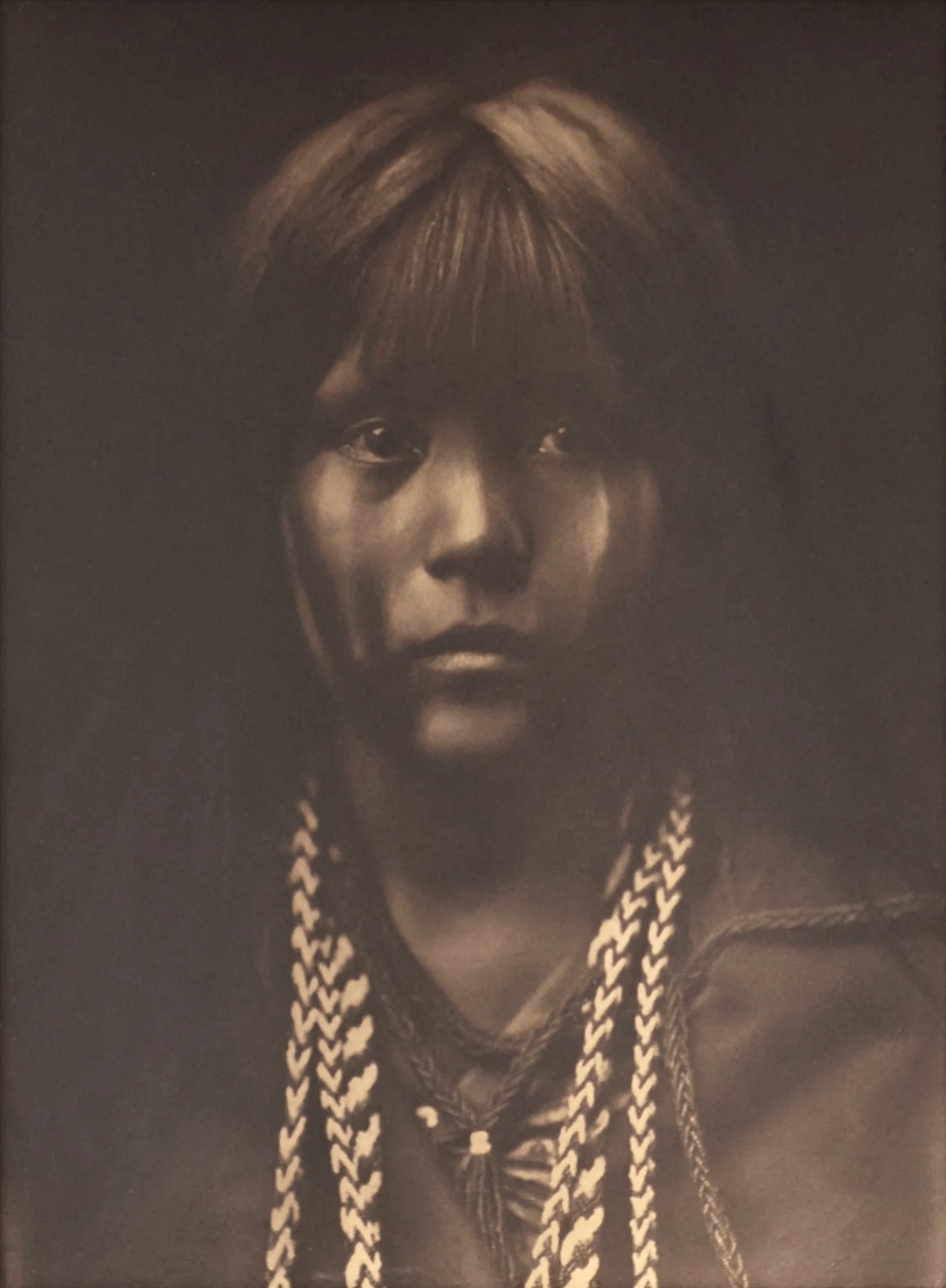

Title: Mósa-Mohave, Originally photographed 1903 By Edward S. Curtis
Shipping: $29.00
Artist: N/A
Period: 20th Century
History: Art
Origin: North America > United States
Condition: Excellent
Item Date: N/A
Item ID: 606
Citations of this media “ Taken in 1903, “Mosa” and later included in volume two, will be one of the key images presented to financer J. P. Morgan in 1906 when they finally meet, as Curtis continues his search for a backer for his ambitious project. According to Timothy Egan’s recent biography, Short Nights of the Shadow Cather, Curtis was able to win Morgan over once he showed him the image of Mosa, a young Mohave girl. Curtis took at least two shots of her, one facing away from the camera in a near profile, and the second facing the camera. Her face is painted and she wears a series of braided necklaces, her body enveloped in a dark blanket. The blanket will become a familiar Curtis trick throughout The North American Indian and often served to hide clothing that appeared too modern and threatened to break the nostalgic feel he worked so hard to create. In another image, also from 1903, entitled “Judith – Mohave” one sees another young woman presumably taken against the same plain backdrop but this time her blanket has mysteriously fallen away to reveal her bare breasts (another version of this image was included in The North American Indian). The blanket is draped gingerly over one shoulder and its presence subtly shifts the visual language of the image from “nude” to “naked.” Even the angle at which the photograph was shot suggests that she is turning towards the camera, when in fact she is not. Her blanket and woven necklaces appear strikingly similar to those seen in the “Mosa” images and suggests these items may have been props. Judith’s nudity is all the more startling when the two images are taken together, as they would be in viewing the whole portfolio. With Morgan’s assured support, Curtis is able to finally begin to work on the project nearly full time. His agreement with Morgan stipulated what was to become, a twenty volume illustrated text on Native Americans, complete with an oversized portfolio of prints for each volume. Morgan agreed to give $ 75,000 over a five-year period, and in return he would receive a number of complete sets. Morgan’s money was specifically given to support the fieldwork and in return Curtis promised to produce the subscription sales that would fund the publication and potentially produce his profit. The edition size was set at 500 but by 1930 Curtis only manages to sell about 220 sets. Perhaps the greatest obstacle to selling subscriptions was the hefty price tag, about $3,000 in 1907 and the price rose to about $4,200 by 1924. The volumes were to be bound in leather, would be printed on the finest paper, but by 1912 only the first eight volumes had been completed and all of the Morgan money was gone. Paying for translators, editors, models, transportation, and other related expenses Curtis managed to accrue incredible amounts of debt and had to go back to Morgan for a loan. In an unfortunate turn of events, J. P. Morgan senior died rather suddenly in 1913, but to Curtis’ great relief, his son, J. P. Morgan Jr., agreed to continue funding the project to its completion. One can’t help but wonder if Morgan Sr. would have been so generous. By 1915, ten volumes had been completed, but sales and production were dramatically slowed by the U. S. entry into World War I, and getting the same Dutch paper became impossible. The project was not without its detractors, as becomes clear in these excerpts from a local Tacoma paper, entitled, “Cost Million for History of Indians.” The article begins:
Edward S. Curtis (1868-1952) was an American photographer and ethnologist renowned for his extensive work documenting the lives and cultures of Native American tribes in the early 20th century. Beginning his ambitious project in 1906 with the support of financier J.P. Morgan, Curtis spent over 20 years photographing and recording the customs, traditions, and everyday life of more than 80 tribes. His work, culminating in the monumental 20-volume series "The North American Indian," is considered one of the most significant ethnographic records of Native American cultures. Curtis's dedication to preserving this heritage has left an enduring legacy in both photography and anthropology.